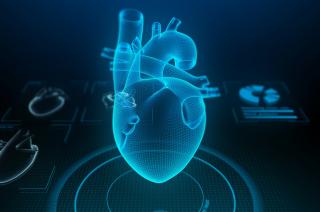Automated image interpretation using AI is one of the digital healthcare technologies to improve accuracy of diagnoses and treatments identified by the Topol Review, which looks at healthcare’s digital future.
The report goes on to say, “AI and robotics will support clinicians in delivering safer, higher-quality care. Deep-learning technologies designed for automated image interpretation have already shown expert-level performance in medical image analysis. The spread of digitisation, supported by appropriate infrastructure, will lead to AI changing clinical diagnostics, and this will benefit all healthcare professions.”
The Topol Review was commissioned by the government as part of the Facing the Facts, Shaping the Future strategy published in 2017.
“It was encouraging to see that there had been a large number of online responses from diagnostic and therapeutic radiographers following an online consultation and appeal for case studies by Dr Eric Topol, the author of the report,” Dr Tracy O’Regan, the Society’s professional officer for clinical imaging, said.
The Society responded with a detailed case study submission.
The review details the professional groups who can expect significant change to their roles in the future. Tracy said, “Those named professionals include among others our physiotherapist and occupational therapy allied health professional colleagues, as well as the oncologist and radiologist members of our teams. The significance for medical colleagues is widely debated and indeed the co-chair of the artificial intelligence and robotics work stream in the review was a radiologist, Hugh Harvey.
“The development of artificial intelligence has huge implications for the work of members of our teams, which will in turn impact upon the practices, services and interactions that we have with patients.”
Tracy continued, “It is perhaps a nod to the current knowledge of, flexibility and comfort with which our SCoR members already work with changing technology that the review does not refer to radiographers as a group whose roles will significantly change.
“Instead, the clinical imaging and radiotherapy members that we represent are obliquely referred to among the ubiquitous healthcare workforce. Particularly relevant review recommendations for the workforce are: that there must be time for CPD and the development and maintenance of a culture of learning. There are specific training needs for current and future workforce, especially related to an understanding of the field of genomics.”
Tracy noted that aspects and themes of change management mentioned in the review are ‘old hat’ for radiographers. She said, “Since 1920 our members have been preparing and have delivered on the implementation of new technology; their development has enabled the provision of frontline contemporary services in fluoroscopy, CT, MR, ultrasound, nuclear medicine, radiotherapy, DXA, digital projectional imaging, and more.
“The use of voice recognition, computerised patient records and electronic provision of imaging results are not new developments for our members. What will be new, however, is what the review reports to be the ‘speed, accuracy, and scalability of medical data interpretation afforded by artificial intelligence’. If the proposed use of technology to improve time to results and commence treatment comes to fruition, then, this could truly make a difference to the lives of all of the patients who use our collective services.
The review proposes three principles to support the deployment of technologies: a) include patients and focus on vulnerable/marginalised groups to ensure equity; b) evaluate new technologies using real-world evidence; c) enable staff to have more time to care and interact with patients - the gift of time.
Tracy commented, “Paradoxically, the review does note in chapter two that there is a risk that advanced technologies may lead to de-humanisation of care. It is important therefore that we strive to ensure that any future developments in imaging and radiotherapy maintain, improve, or enable us to provide person-centred and values-based frontline care with patients.
“A point is made in chapter 7 that technologies can be divided into those that augment existing care and those that might have the capacity to transform care. Our clinical imaging and radiotherapy members must now take the opportunity to positively influence the development of technology to transform care: to ensure that we can transform our traditional models and ways of working.”
Tracy continued, “As an example, the concept of ‘scanxiety’ and the distress that patients experience while subsequently waiting for results allows us to posit that, in some cases, the old ways of working do not meet the needs of contemporary society, patients, carers and staff.
“The review is a useful start to understanding the changes that are coming in healthcare. It will be down to the hard work of patients, carers, service users and the ever-present healthcare workforce to champion and use technology to their advantage, to put these changes into useful action.”
